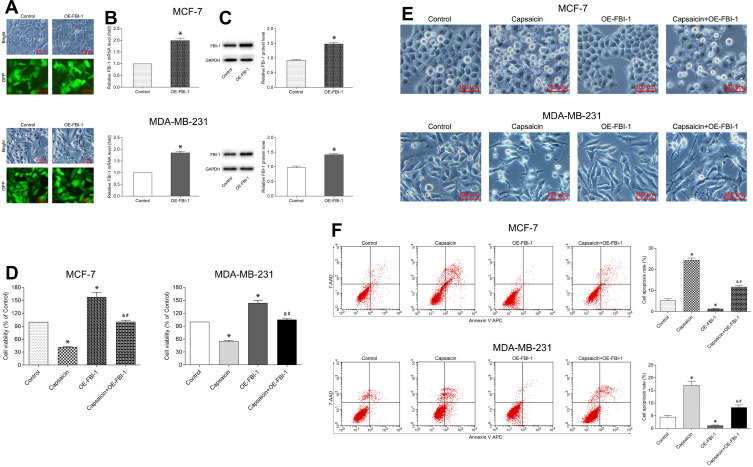Figure 3.
FBI-1 overexpression attenuates the capsaicin-induced anti-proliferation and pro-apoptosis effects in breast cancer cells. (A–C) Cells were transfected with recombinant FBI-1-overexpression lentiviral particles or corresponding negative control vectors, respectively. The efficiency of FBI-1 overexpressing was assessed by inverted fluorescence microscopy, qRT-PCR, and Western blot. Scale bar 100 μm, or data are presented as means ± SD, *p<0.05 vs Control. (D) Cells were treated with capsaicin alone (150 μmol/L) or together with FBI-1 overexpression for 72 h. The cell viability was detected by CCK-8 assay. Data are presented as means ± SD, *p<0.05 vs Control; &p<0.05 vs Capsaicin; #p<0.05 vs OE-FBI-1. (E) Cells were treated with capsaicin alone (150 μmol/L) or together with FBI-1 overexpression for 72 h. The cell morphological changes were observed using an inverted microscope (scale bar 100 μm). (F) Cells were treated with capsaicin alone (150 μmol/L) or together with FBI-1 overexpression for 72 h. The cell apoptosis rate was detected by flow cytometry. Data are presented as means ± SD, *p<0.05 vs Control; &p<0.05 vs Capsaicin; #p<0.05 vs OE-FBI-1.

